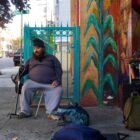News coverage of this week’s rainfall is almost as saturated as the weather itself, but one item being overlooked is the impact on San Francisco’s sewer system. Rainwater runoff from streets and sidewalks drains into the antiquated structure, where it joins the city’s untreated wastewater.
During heavy bursts of rain, the system can become deluged and overflow into the bay or ocean. Last winter Richmond and Sausalito spilled hundreds of thousands of gallons into the bay. San Francisco runs the same risk with every significant rainfall.
Hundreds of cities across the U.S. have the same problem. The overflows are illegal, and sewage systems are the most frequent violators of the 1972 Clean Water Act, according to the New York Times.
To alleviate the surges of fouled water, several city agencies have been quietly taking measures to lessen the amount of rainwater going into city drains. The whole system is on track to get a $4 billion upgrade, but the SF Public Utilities Commission would still prefer to not have the excess water in the system.
The SFPUC is offering rain barrels at a reduced price so city residents can collect the rain from their roofs. While the water isn’t drinkable, it can be used to water plants or flush a toilet tank. It could even be drained into the city’s system at a non-peak time.
PlantSF has partnered with the SF Parks Trust to undertake more permeable landscaping in the city. They arrange for more planted areas in sidewalks and parking lots (and even plantable, permeable driveways) to absorb the rainfall and avoid contributing to runoff.









